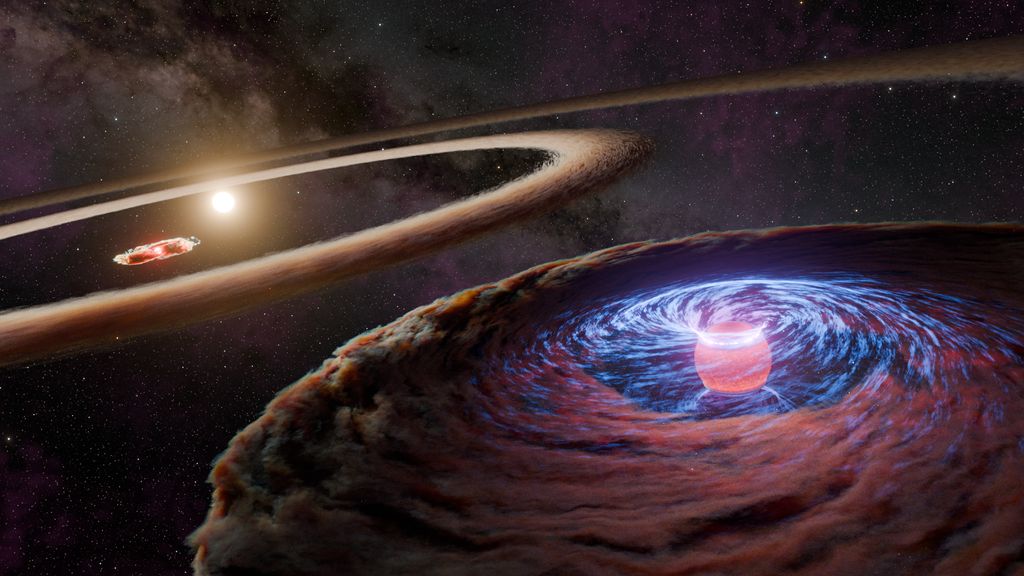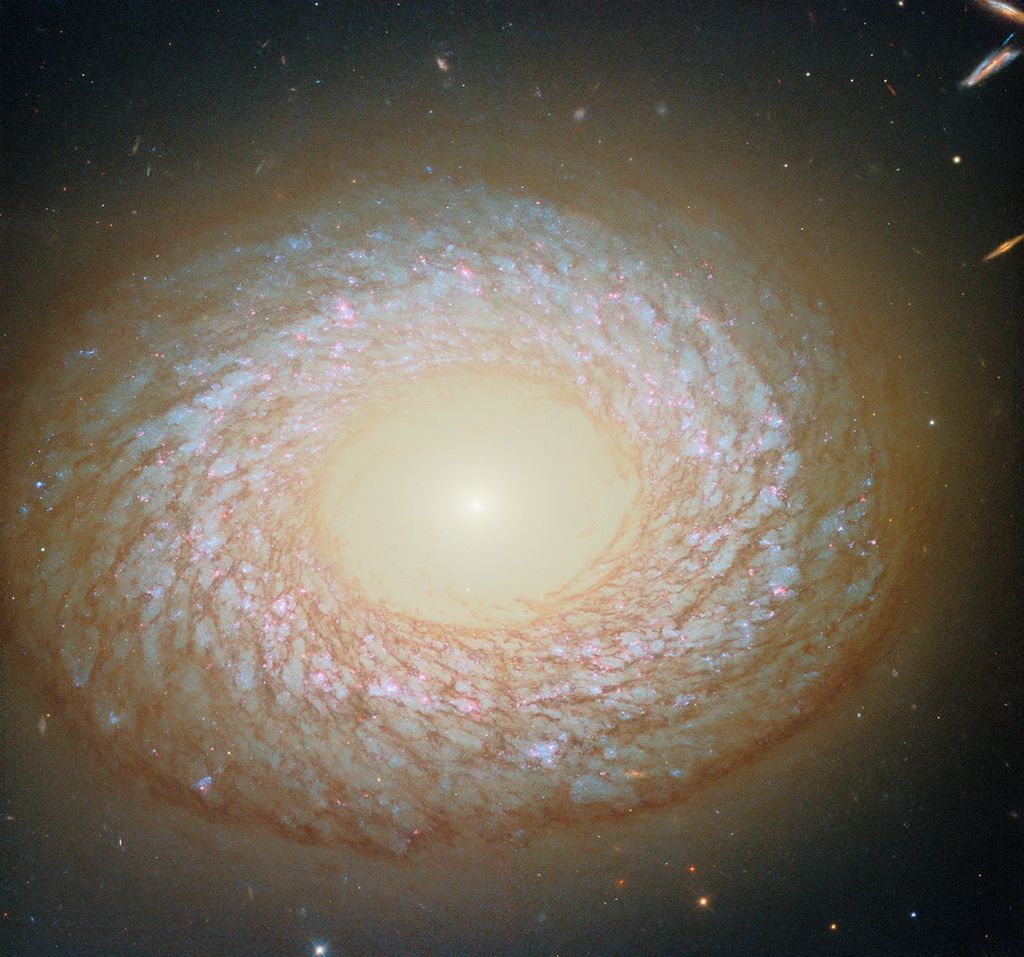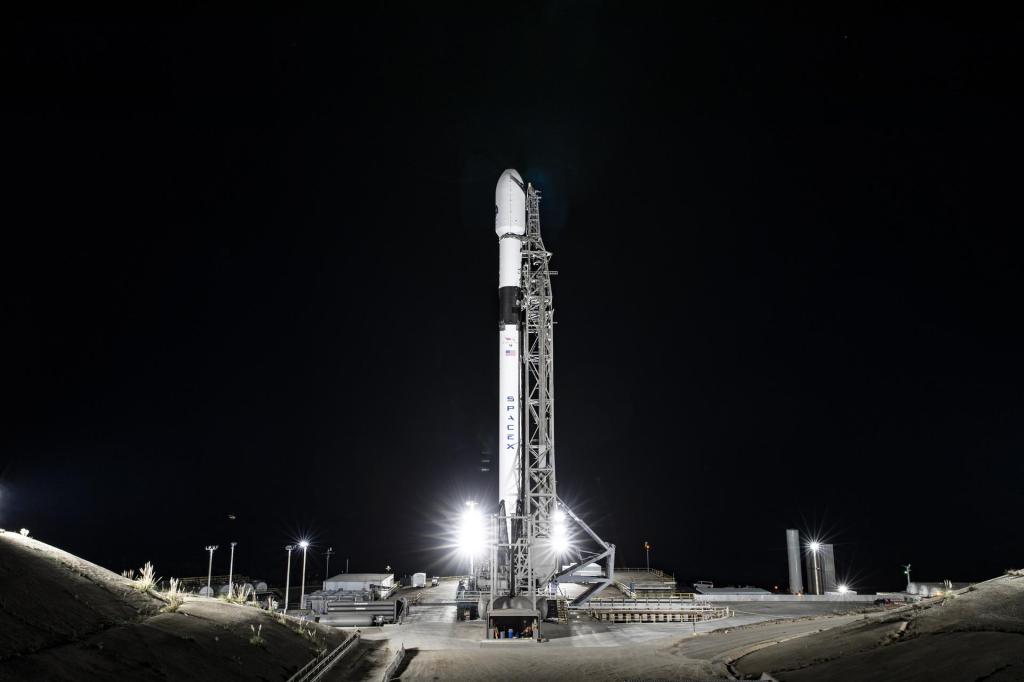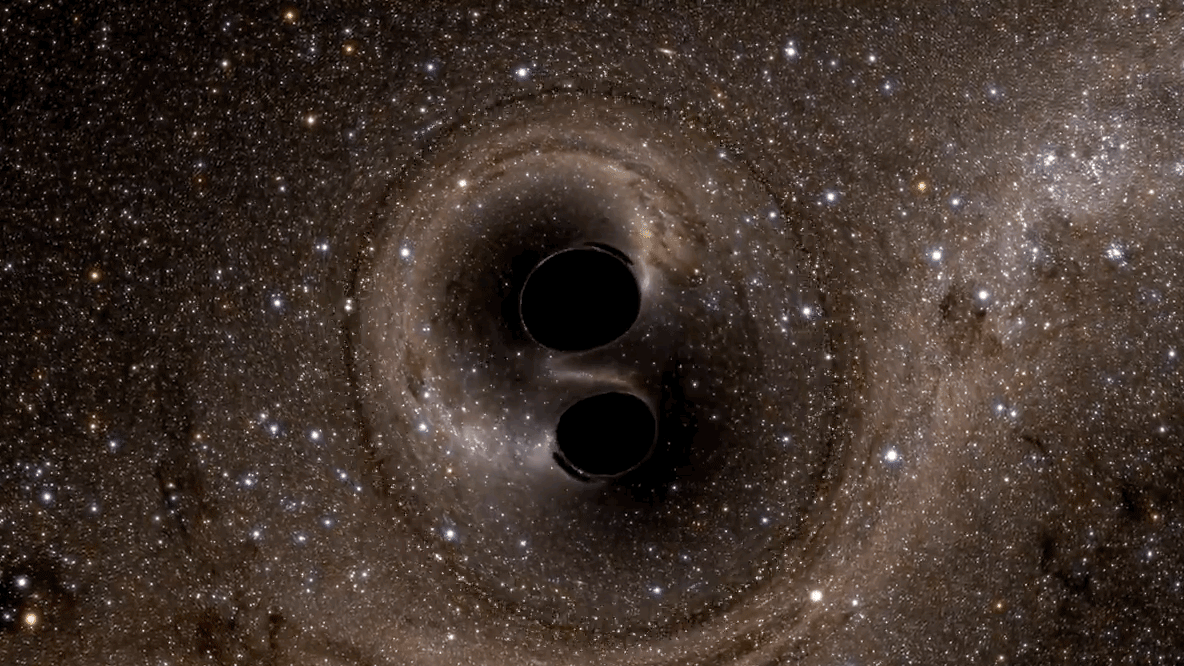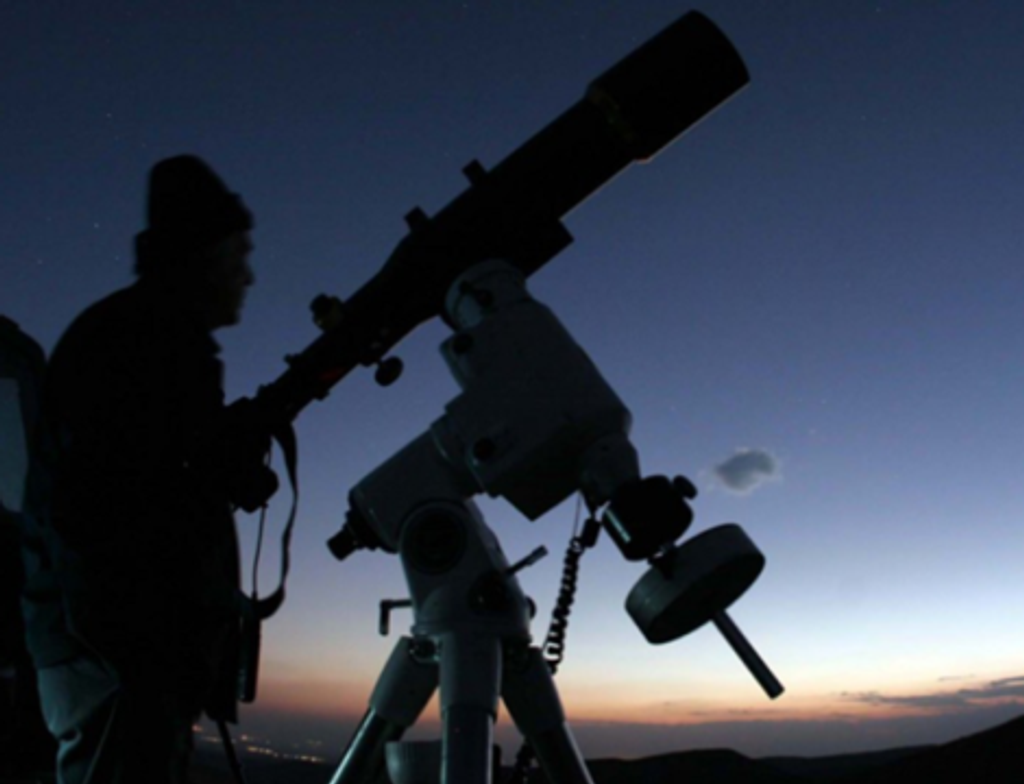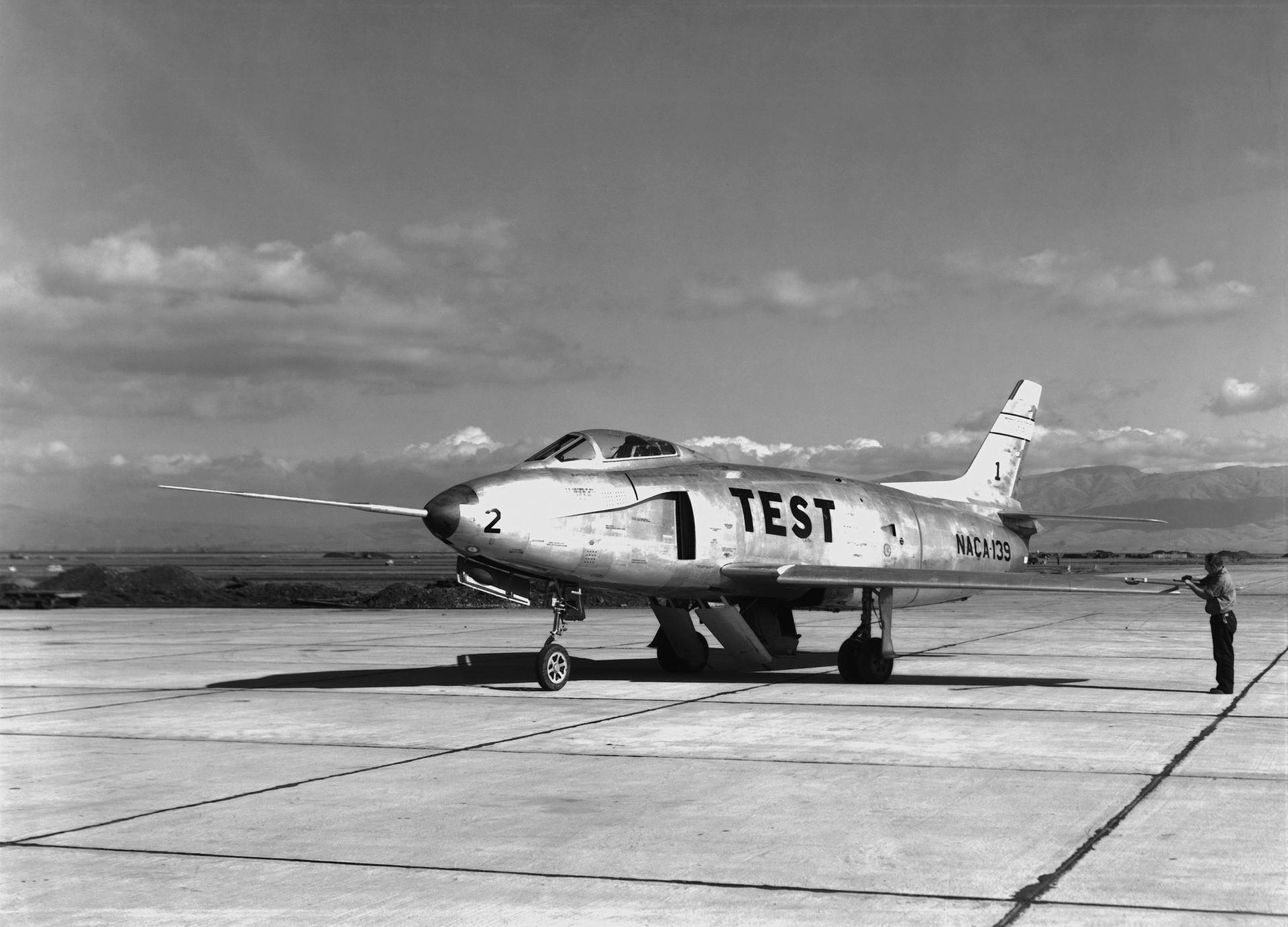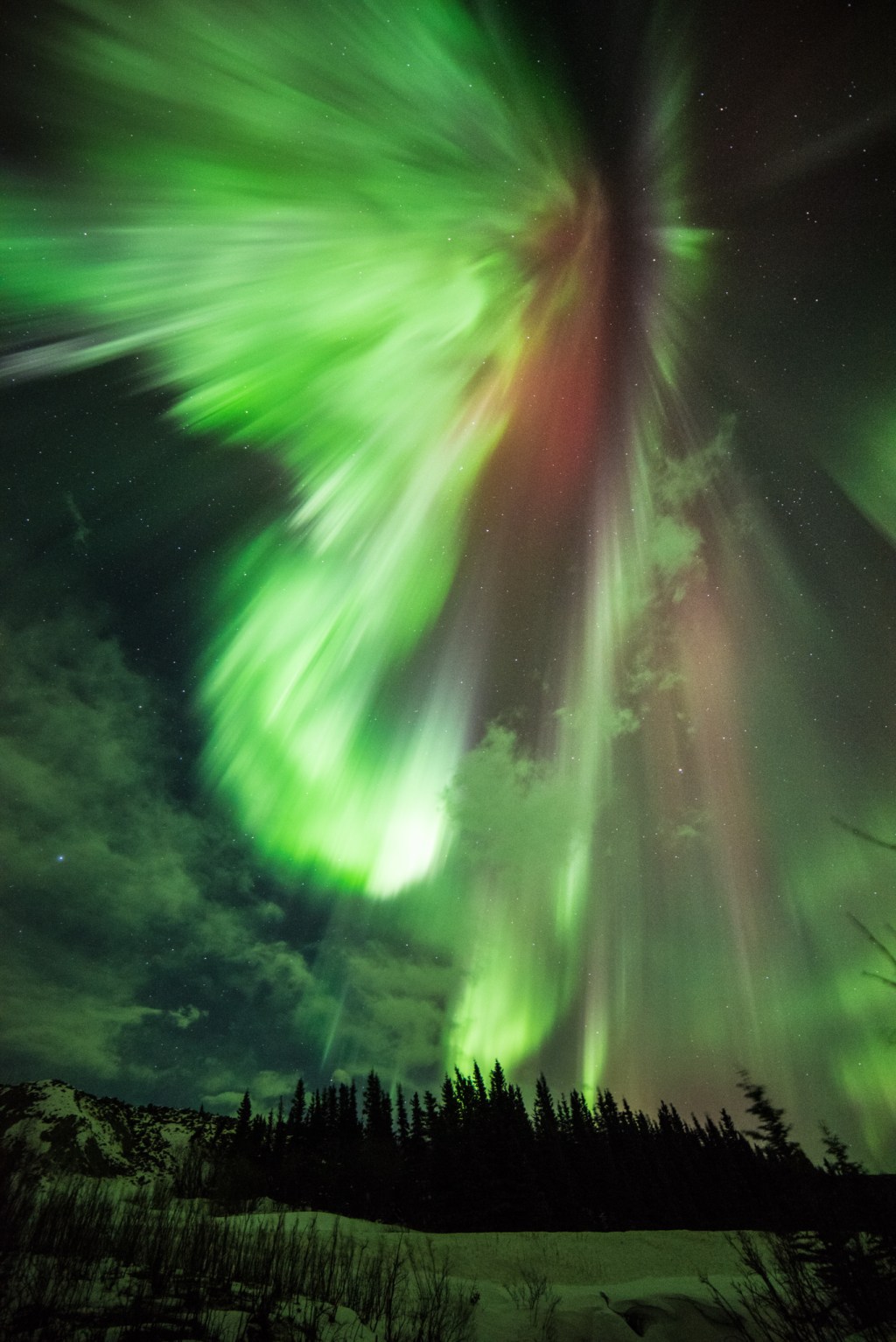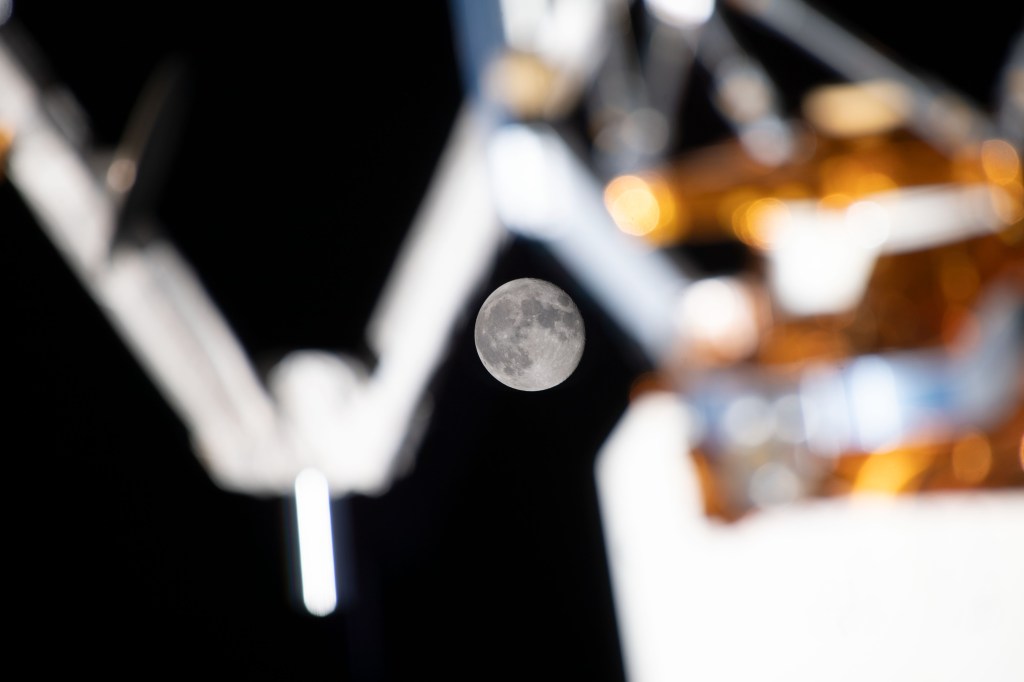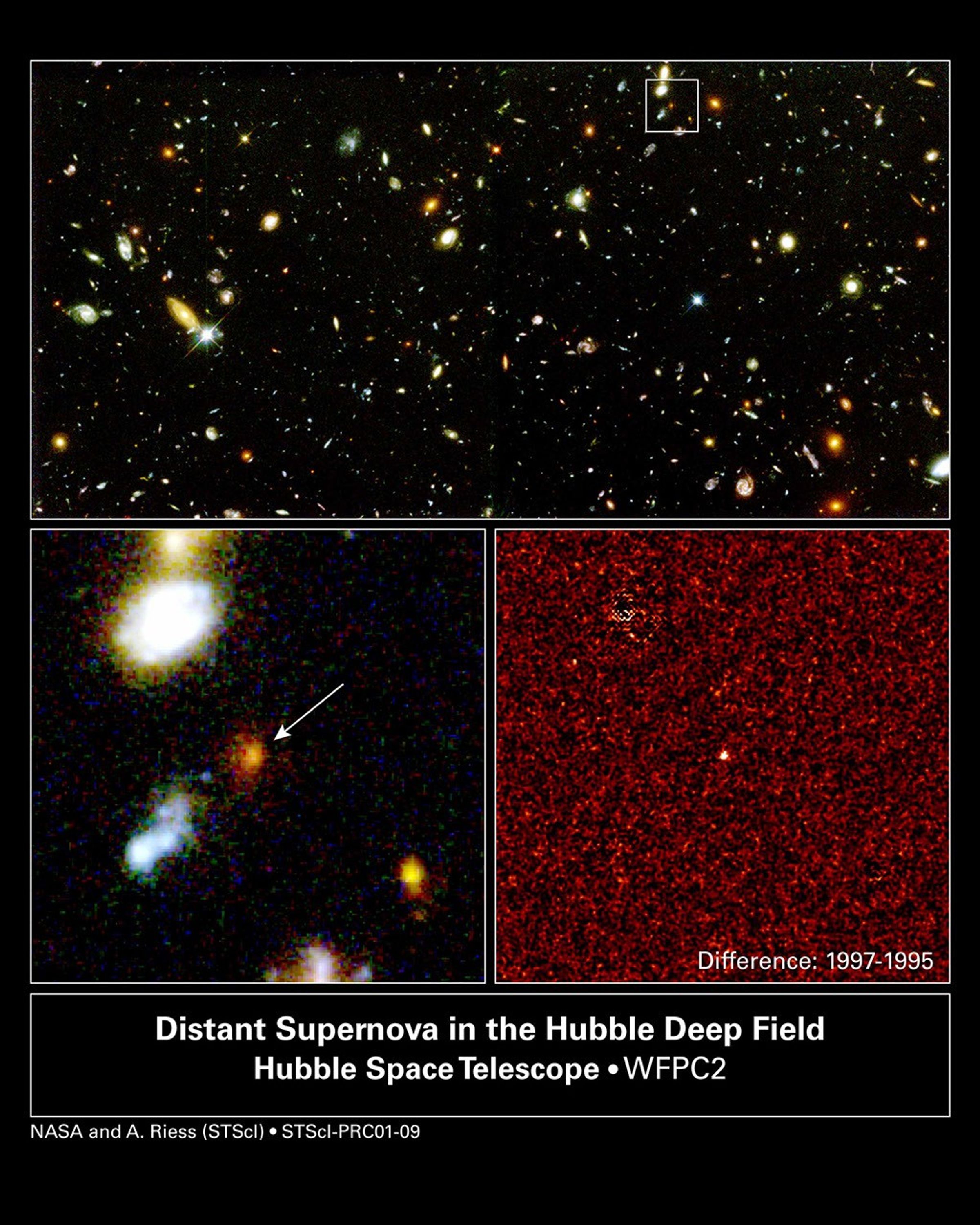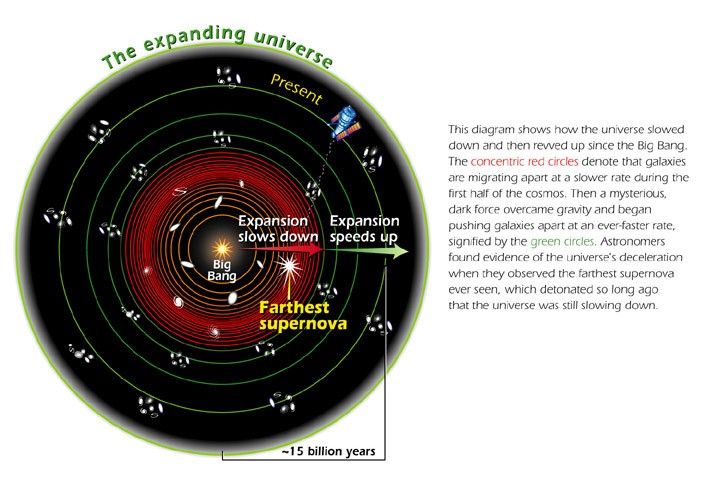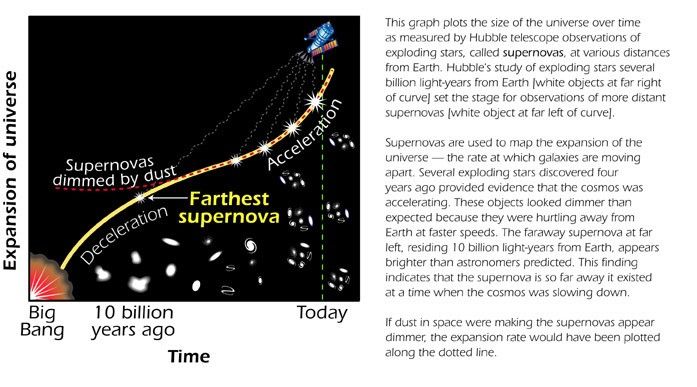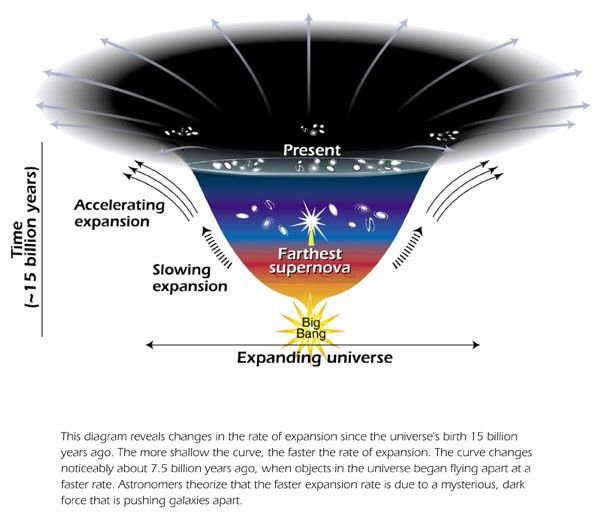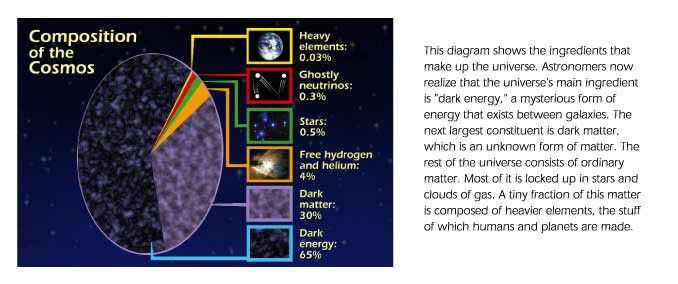NASA's Hubble Space Telescope has seen a burst of light from an exploding star located much farther from Earth than any previously seen - a supernova blast in the early universe that is casting light on a mystery of truly cosmic scale.
This stellar explosion is extraordinary not only because of its tremendous distance, 10 billion light-years from Earth, but also because its discovery greatly bolsters the case for the existence of a mysterious form of "dark energy" pervading the universe. The concept of dark energy, which shoves galaxies away from each other at an ever-increasing speed, was first proposed, and then discarded, by Albert Einstein early in the last century.
The Hubble discovery also reinforces the startling idea that the universe only recently began speeding up, a discovery made about three years ago when the unusually dim light of several distant supernovas suggested the universe is expanding more quickly than in the past, but there were alternate explanations. The more distant supernova (redshift z=1.7) refutes these alternatives and offers the first tantalizing observational evidence that gravity began slowing down the expansion of the universe after the big bang. Only later did the repulsive force of dark energy win out over gravity's attractive grip.
"The supernova appears to be one of a special class of explosions that allows astronomers to understand how the universe's expansion has changed over time, much as the way a parent follows a child's growth spurts by marking a doorway," said Adam Riess of the Space Telescope Science Institute (STScI), Baltimore, MD. "This supernova shows us the universe is behaving like a driver who slows down approaching a red stoplight and then hits the accelerator when the light turns green." The team of astronomers, led by Riess, made the discovery by analyzing hundreds of images taken by Hubble in infrared and visible light to study how galaxies formed. Fortuitously, one of those galaxies contained a supernova previously discovered by astronomers Ron Gilliland, STScI, and Mark Phillips, Carnegie Institutions of Washington.
The record-breaking supernova appears brighter than it should if the universe had been expanding at a steady rate. The reason is that a decelerating universe holds galaxies relatively close together and objects in them would have appeared brighter because they would be closer. "Long ago, when the light left this distant supernova, the universe may have been slowing down due to the mutual tug of all the mass in the universe," said Riess. "Billions of years later, when the light left more recent supernovas, the universe had begun accelerating, stretching the expanse between galaxies and making objects in them appear dimmer."
"Hubble's ability to find titanic stellar explosions at these extreme distances is what it takes to confirm this theory that the universe must have been slowing down before it switched into high gear,'" said Dr. Anne Kinney, director of NASA's Origins program at NASA Headquarters, Washington, DC. "Later this year Astronauts will install a new camera on Hubble that will give us 10 times better resolution than the current camera, which will give us an even better capability to find answers to grand cosmic questions like this."
Observations of several distant supernovas by two teams of astronomers in 1998 led to the prediction that the universe got the "green light" to accelerate when it was half its present age. Astronomers say the new Hubble findings rule out other explanations.
Nearly a century ago, Albert Einstein's Law of General Relativity concluded the universe must collapse under the relentless pull of gravity. However, like many scientists of his time, he assumed the universe to be static and unchanging. To make his equations fit those observations, Einstein added something he called the "cosmological constant" whose gravity is repulsive, though he had no idea if it was real.
Shortly afterwards, astronomer Edwin Hubble made the celebrated discovery that the universe was expanding. He assumed that the universe must be slowing down under gravity and might even come to a halt, leading Einstein later to say that his cosmological constant was the biggest blunder of his career. Now it appears Einstein was on the right track after all.
The source of the repulsive gravity may be something akin to Einstein's cosmological constant, referred to as the energy of the "quantum vacuum," a subatomic netherworld pervading space that provides a source of energy, or it may be something entirely new and unexpected. "While we don't know what dark energy is, we are certain that understanding it will provide crucial clues in the quest to unify the forces and particles in the universe, and that the route to this understanding involves telescopes, not accelerators," said astrophysicist Michael Turner of the University of Chicago.
Riess' collaborators include Peter Nugent (Lawrence Berkeley National Laboratory), Brian Schmidt (Mount Stromlo Observatory), and John Tonry (Institute for Astronomy). NASA's Hubble Space Telescope is a project of international cooperation between NASA and the European Space Agency.
Background Information: Chasing the Light from an Ancient Supernova – An Astronomer's Adventure
Ten billion years ago, when the universe was in its infancy, an aging star in a corner of space took its last breath. This final gasp was a big one, a titanic supernova explosion, which unleashed streams of brilliant light.
As the blazing light traveled through space and across billions of years, Earth and its neighboring planets in the solar system were born and evolved. Humankind arose. Astronauts set foot on the moon. NASA's Hubble Space Telescope was launched into space. The light was still journeying toward Earth in 1995 when Hubble stared at a tiny speck of sky in the Northern Hemisphere for its farthest look across the cosmos, called the Hubble Deep Field.
Finally, the light from the dying, faraway star did reach Earth in 1997. Astronomers using the Hubble telescope to hunt for distant supernovas caught it while taking a second look at the Hubble Deep Field. The detection was the first of an unlikely string of coincidences leading to important information about the supernova and the universe's behavior 10 billion years ago. These serendipitous events include finding the exploding star buried in two other Hubble telescope observations of the same area, both taken within months of the second "deep field" study.
It took some enterprising and tenacious astronomers, led by Adam Riess of the Space Telescope Science Institute in Baltimore, MD – and a little luck– to weave the information into a cohesive story. Riess did it without ever making an observation himself. Instead, he employed some old-fashioned astronomical detective work: networking with astronomers and digging through Hubble's rich archive of photographs to collect the evidence.
Based on his team's analysis, the supernova, residing 10 billion light-years from Earth, is the farthest ever detected. The team's measurements of this cosmic explosion support mounting evidence that the universe's expansion rate is accelerating, which bolsters the case for the existence of a mysterious form of dark energy pervading the cosmos. Their work to achieve that result also underscores how luck and collaboration among scientists is important to astronomical research.
"Finding several Hubble observations that studied the same region as the supernova within a span of a few months is very serendipitous," Riess says. "We were really amazingly lucky. This is unlikely to be repeated again."
Adds fellow Institute astronomer Ron Gilliland: "The odds are about 1,000 to 1 that a string of observations taken at about the same time would have captured the same region where the supernova dwells."
Going on a Cosmic Fishing Trip
Riess wouldn't have studied the supernova at all if it hadn't been for Gilliland. Gilliland and Mark Phillips of the Carnegie Institution of Washington wanted to capitalize on the Hubble Deep Field by initiating another Hubble study of the same region. The Hubble Deep Field was the orbiting observatory's ten-day view of a tiny region of the heavens. During those ten days in 1995, Hubble's visible-light camera - the Wide Field and Planetary Camera 2 - stared deeper into space than ever before, revealing a zoo of galaxies, some of which existed more than 10 billion years ago.
Two years after that landmark observation, Gilliland went hunting in the deep field for supernovas. When Gilliland first proposed in 1995 to use Hubble's visible-light camera to search for these far-flung stellar detonations, astronomers knew very little about them. Studying supernovas meant astronomers had to catch them popping off. Supernovas are "cosmic flashbulbs": Their brief, intense explosions are visible across the universe, but only for about six months.
Theorists predicted that Gilliland would be extremely lucky to find one exploding star, although some astronomers believed that the universe long ago was booming with star birth.
"Our observation in December 1997 was a fishing expedition because we were looking at such a small region of sky," Gilliland recalls. "There was less than a 10 percent probability of seeing an ancient supernova, like the one we actually caught."
He found two! But it took nearly a year of work to find the supernovas because they're not visible in the image. Although supernovas are among the brightest beacons in the cosmos, many of the distant ones are hidden in the glow of their home galaxies. So, Gilliland employed a special technique to pinpoint them. Using computer software, he compared two pictures of the myriad of galaxies in the deep field taken two years apart. One image was of the original Hubble Deep Field; the other, Gilliland's follow-up deep-field image. The computer then measured the light from the galaxies in both pictures. Noting any changes in light output between the two photos, the computer identified two blobs of light in Gilliland's image that weren't in the original deep-field study. The Institute astronomer identified the blobs as supernovas.
Gilliland may have found the exploding stars, but he couldn't collect enough information to calculate a solid estimate of their distances from Earth. He did determine, however, that one of them was farther than the other. In one of many ironic twists to this tale, a scheduling change enabled Gilliland to nab this far-flung supernova. His observation was originally scheduled for November 1996, when the light hadn't reached Earth. Fortuitously, Gilliland's study was bumped to December 1997.
An Astronomical Detective Search
Gilliland's discovery may have only remained the subject of a scientific paper in an astronomy journal had it not been for Adam Riess. The astronomer found Gilliland's discovery intriguing, yet frustrating.
"There wasn't a large amount of information in Gilliland's study because he observed these supernovas once and then moved on," Riess explains. "His quick observations were meant to find supernovas. But once you find them, you need to observe them over the course of a month, to watch them brighten and fade, using them as tools to understand the history of the expanding universe. I was frustrated because once the supernovas were found they weren't followed."
But Riess soon hit the astronomical jackpot last year when he learned that coincidentally the Hubble telescope had taken more pictures of the deep field around the same time as Gilliland's study. The most extensive observation was conducted by Rodger Thompson of the University of Arizona in Tucson.
Just a month after Gilliland's observation, Thompson trained Hubble's "infrared eye" - the Near Infrared Camera and Multi-Object Spectrometer - on the deepest view of the universe to study galaxy evolution. But the telescope only viewed about 15 percent of the original deep field. And, by chance, Gilliland's most distant supernova - called 1997ff - just happened to dwell in that area. Thompson didn't realize it at the time because the supernova was buried in the host galaxy's light. The telescope snapped pictures of that region for a month, building up a stockpile of information for Hubble's archive.
Flipping through Thompson's bounty of images, Riess viewed the changes in the supernova over 30 days, especially how it was fading in brightness and how its colors changed over time. This information provided important clues about the nature of this dying star.
Then Riess heard that Institute astronomer Mark Dickinson conducted another Hubble observation of the deep field taken six months after Thompson's. Like Thompson, Dickinson used the infrared camera to study galaxy evolution in a region that, by chance, included the supernova's host galaxy. His analysis confirmed that the host galaxy was a massive elliptical.
The supernova already had faded by the time Dickinson observed the area. Riess employed the same technique as Gilliland, comparing Dickinson's picture of the galaxies in the deep field with Thompson's image to pinpoint the dying star.
Crunching the Numbers
Riess then called on a few colleagues to help analyze the supernova evidence. His analysis team included Peter Nugent of the Lawrence Berkeley National Laboratory in Berkeley, CA; Brian Schmidt of Mount Stromlo and Siding Springs Observatory in Australia; and John Tonry of the Institute for Astronomy at the University of Hawaii. For Nugent, studying this supernova was like reuniting with an old friend. The California astronomer helped Gilliland analyze the information collected from the stellar blast after its initial discovery.
Riess and his collaborators calculated the distance to the supernova, which turned out to be near the limit of Hubble's vision. They then compared it with Dickinson's estimated distance to the host galaxy. The two matched. The team then turned its attention to studying the universe's behavior 10 billion years ago and compared their results with what the universe is doing today.
"This supernova has gotten the royal treatment," Riess jokingly says. "I spent four to five months studying this object, and I've never really spent so much effort on one supernova. Because luck was involved, I couldn't rely on any other telescope to reproduce this.
"But it was worth all the hard work because this supernova is so far away, it has a special ability to tell us how the universe grew when it was still in its infancy. We may not get this chance again for a very long time."
Background Information: According to Einstein, Gravity can be Repulsive
Gravity's most familiar characteristic is that it pulls, not pushes. Einstein's theory of gravity introduced some remarkable ideas: black holes, curved space, and repulsive gravity. Even in Einstein's theory, matter always pulls; the repulsive aspect of gravity – a force that pushes matter apart – only arises in extraordinary circumstances.
Einstein happened upon this new feature of his theory – the repulsive force – when he introduced the "cosmological constant" - a sort of "fudge factor." He balanced the repulsive gravity of his cosmological constant against the attractive gravity of ordinary matter to create a static model of the universe. He discarded the cosmological constant when Hubble discovered that the universe is not static at all, but is expanding.
The discovery in 1998 that the expansion of the universe is speeding up and not slowing down revived interest in repulsive gravity, in a guise Einstein might not have fully accepted. According to Heisenberg's quantum uncertainty principle, the vacuum is not empty; rather, it is simmering with particles living on borrowed time and borrowed energy. The gravity of the quantum vacuum, just like that of Einstein's cosmological constant, is repulsive. However, physicists have not been able to reliably compute just how repulsive "nothing" is and have thus sought alternate explanations.
A number of possibilities have been suggested for the source of the repulsive gravity – referred to as dark energy - that is driving the universe apart. They range from the energy of the quantum vacuum, to a mini-version of Guth's inflation, to the influence of hidden additional space dimensions. In some theories the dark energy eventually dissipates, with the slowing effect of ordinary matter taking over again. While there is no consensus as to what the dark energy is, astronomers and physicists agree that this mysterious force is extremely important. The laboratory in which to study it is the universe itself.

